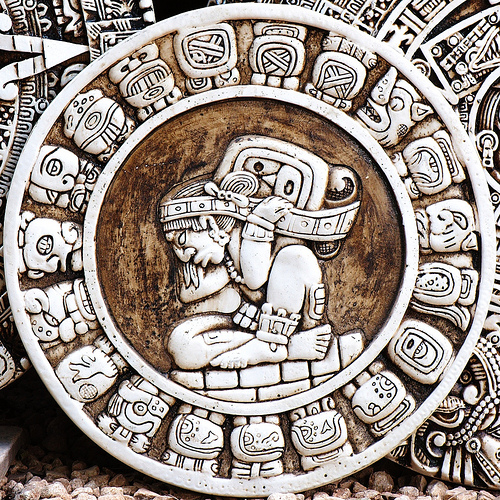We’re definitely hurtling towards doom, but take heart: At least the world isn’t going to end for a stupid reason like “Mayan prophecy.” It will end for a totally smart reason like “perfectly able-bodied people unwilling to quit driving two blocks to the gym.”
For the past few years, there’s been a persistent meme that 2012 is the last year ever, because it’s the last year on the Mayan calendar. Of course, nobody seriously believed this except for people who panic every time their wall calendar runs out (“oh god, there are no more months past December!”) — at least, that’s what I’ve been telling myself to avoid a despair spiral. But sheer idiocy has never been sufficient to keep an idea from getting all up in popular culture, so “2012 is the end of the world” joined things like “the government is hoarding secret aliens” in the pantheon of complete BS that still gets made into movies.
Except as it turns out, 2012 isn’t the last year on the Mayan calendar at all — it’s just the last year on the calendar we happened to be looking at. Boston University archaeologist William Saturno and his team has found an amazing trove of millennium-old art in Guatemala, including tables showing at least 7,000 years of future astronomical calculations.
Working with epigrapher David Stuart and archaeologist and artist Heather Hurst, the researchers noticed several barely visible hieroglyphic texts, painted and etched along the east and north walls of the room.
One is a lunar table, and the other is a “ring number”—something previously known only from much later Maya books, where it was used as part of a backward calculation in establishing a base date for planetary cycles. Nearby is a sequence of numbered intervals corresponding to key calendrical and planetary cycles.
This is a really cool discovery, and contributes to our understanding of Mayan predictions as being concerned with local threats, not mystical insights — more punditry than prophecy. It’s easy to imbue Mayan artifacts with a spooky wisdom and significance just because they’re old and, to many of us, foreign — but the Mayans were focused on natural and economic upheaval, just like us.
When the Mural was made, the Xultún region was facing “a period of intense drought. In fact, cities were collapsing in various parts of the Maya world in this era,” he said.
“The preoccupation of this king and his courtiers with astronomical calculation is not an arcane exercise. It has a very practical consequence for the people of the city of Xultún, which is, What the hell is going on with the economy?”
Of course, on the other hand, it’s AWFULLY CONVENIENT that we happened to find this calendar in the VERY YEAR the world was scheduled to end. Here’s your next movie, Roland Emmerich, and you can have this for free plus a small cut of profits: The world actually did end in 2012, but was replaced with a near-exact duplicate with a longer warranty. Figuring out what else is different should keep the conspiracy theorists busy for a while.



